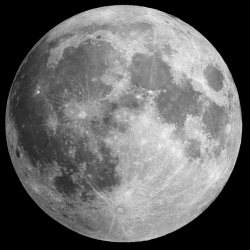
NASA, according to NASASpaceFlight.com, is quietly claiming to have successfully tested a revolutionary new means of space travel propulsion that could one day allow for such insane speed, and to have done it in a hard vacuum like that of outer space for the first time. The technology is based on the electromagnetic drive, or EM drive.
The science behind the EM drive is, well, complicated to say the least, but the basic idea is to convert electrical energy into thrust without propellant (the fuel in rockets), which should be impossible because it violates the law of conservation of momentum. That law states that momentum can only be changed by one of the forces described by Newton’s laws of motion, that’s where propellant normally comes in with traditional rockets.
Scientists from the US, UK and China have demonstrated the EM drive over the past 15 years or so, but it’s been controversial, since as mentioned above, the EM drive would seem to violate classical physics. NASA’s tests in conditions that mimic outer space, however, bring a new sense of possibility to electromagnetic propulsion.
If such a technology really does work, and can be implemented in future spacecraft, the implications include faster, cheaper and more efficient travel around our solar system and beyond, and could even be a stepping stone to faster-than-light travel.
Imagine a vehicle carrying half a dozen passengers and luggage to the moon in about four hours, or a multi-generational trip at almost one-tenth the speed of light to reach Alpha Centauri in less than a century. The technology that makes this a reality could be in testing right now in Texas at the Johnson Space Center.
NASA did not immediately respond to a request for comment, but we reached out to Paul March, the engineer who has been working on the EM drive at JSC and sharing some of the results on the forum mentioned above. He told us:
"My work at Eagleworks (the lab at JSC where the EM drive is being tested) is just a continuation of my work tackling the fundamental problem that has been hindering manned spaceflight from the termination of the Apollo moon program. That being the availability of a robust and cost-effective power and propulsion technology that can break us loose from the shackles of the rocket equation."
The technology will still require more tests to verify that it’s the real deal (none of this has gone through anything like a rigorous peer review, except for the pretty vigorous discussion on the above forum), and any spacecraft that ends up using an EM drive will basically need a substantial onboard nuclear power plant that will need to be developed for such a specific use in space.
For a more detailed analysis of EM Drive, see
www.nasaspaceflight.com/2015/04/evaluating-nasas-futuristic-em-drive/
